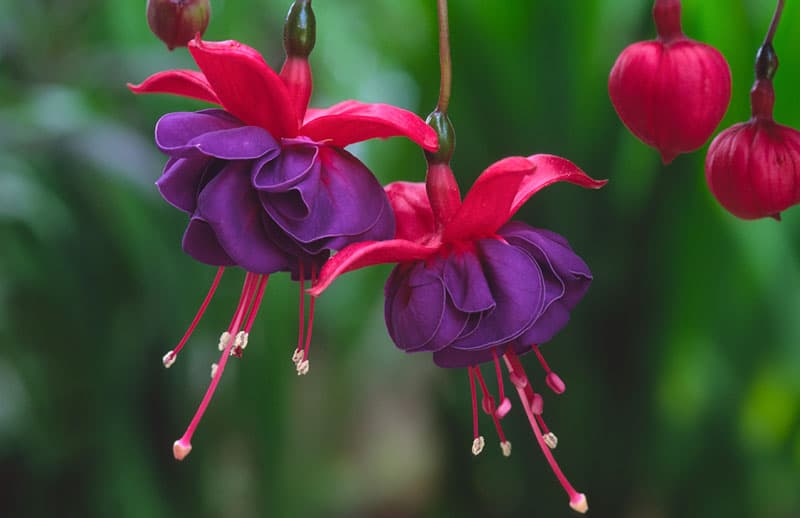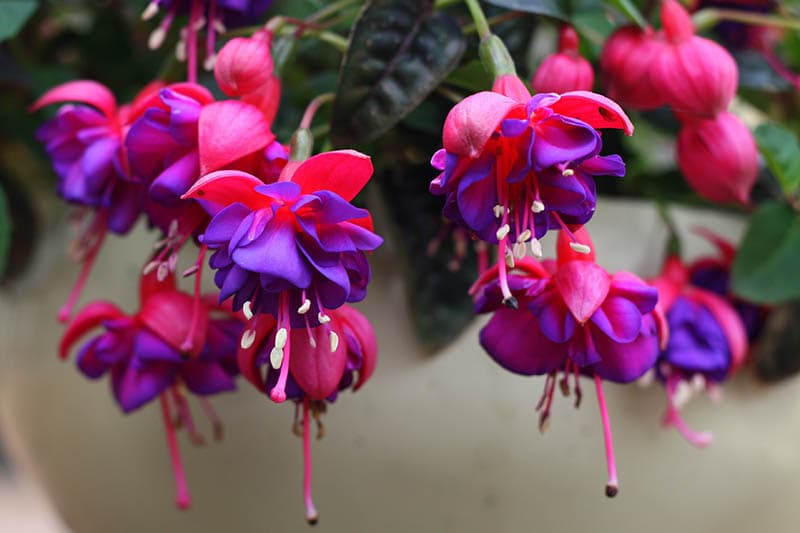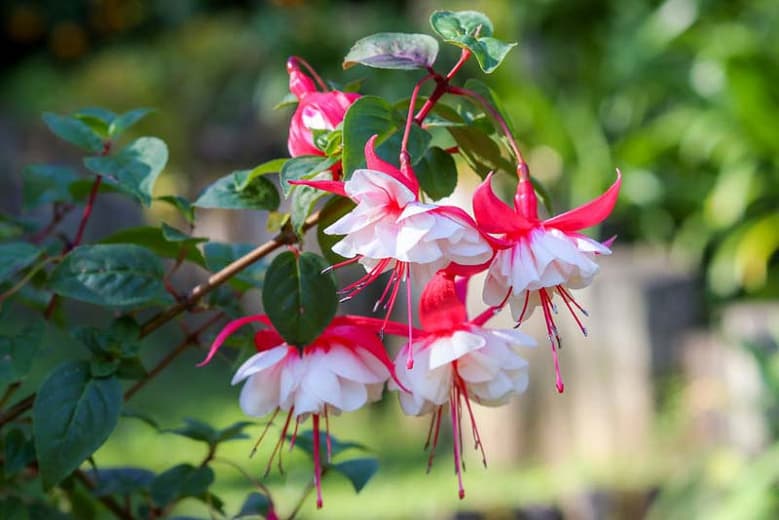What is Fuchsia Plant And How Should It Be Taken Care Of?
We will tell you about a beauty which we do not see in our daily life.
It is much different from the flowers we are used to with its color and stance.
What kind of flower is Fuchsia, which has given the name “Onagraceae” with its pendulous appearance? How is it grown? We researched them all for you.
The species of the Onagraceae, which is very decorative, especially on the balconies, has been observed growing up to 15 meters.

The main reason why they do not grow naturally in our country is the high summer temperature.
If you are thinking of looking at this flower in a region with high summer temperatures, it is recommended to place it in a location where it can get as much wind as possible and sprinkle water on its leaves from time to time.
Some sources even state that spraying water daily helps the plant stay away from insects.
What is Fuchsia?
The Fuchsia is a shrub-shaped plant with delicate branches.
It is a perennial ornamental plant that can be grown outdoors.
The flowers hang down from the branches of the plant.
The flowers of the plant can be red, purple, white and pink.
In almost all species, the flowers are seen in two colors.
It is very difficult to believe that it is a real flower, and regular care is required for the Fuchsia Flower to bloom every year.
The most important factor in this care is correct irrigation, sunbathing, fertilization and spraying.
It is recommended to plant in January.
Fuchsia Care

In winter, as the age of the plants grows, their ability to withstand cold increases, but a winter temperature of at least 10 degrees is required for young plants.
Bringing your flower into the house during the winter months will be beneficial for its development. However, under any circumstances, you should not leave your plant below 5 degrees.
They do not shed their flowers easily. Fuchsia, which likes semi-shade places, will begin to shed their flowers if exposed to direct sunlight.
The reason for this is the increase in temperature that will occur in the soil. This will directly damage the root of the plant.
It is produced with seeds and cutting, but the production of Fuchsia with seeds is not recommended.
Because it is a very difficult process and the probability of failure is high.
Repotting is done once a year at the beginning of spring, before the summer heat starts.
Since it has a hanging form, suitable pots should be preferred. Especially if you choose pots that can be hung, you will not have any problems while exhibiting your flower.
The pots you choose must have drainage holes, otherwise the excess water will damage your plant.
You should not neglect to take the necessary precautions to prevent leakage into the wall after irrigation in pots hanging on the wall.
The soil requirement of the Fuchsia is loose soil.
It likes permeable soils with good drainage.
The soil should not be too hot, as this can damage the roots and cause the flowers to drop.
In fact, the plant tends to grow in any soil, but if you want it to be healthy and abundantly flowering, you should keep its soil fresh.
If the soil structure of the plant is not fertile enough, you can add nutrients to the irrigation water in May, June, July, August and September. It is sufficient to give nutritional supplemented water once a month.
We recommend that you do not buy the supplement of the genus you will use without asking the florists, because not every product may appeal to every flower.
Fertilizing should be done once a week from mid-spring to the end of summer.
In other words, you need to feed your plant 4 times a month in April, May, June, July and August. You can add nutrients to your soil with compost.
If the watering is not determined and is excessive, the buds of the flower begin to fall.
You should increase the amount of watering in the summer and decrease it in the winter.
For winter irrigation, you need to check the soil and water when the plant needs it.
This may even require watering once every 1 or 1.5 months.
In any case, Fuchsia is not a plant that requires a lot of water, so we think that you will not have much difficulty in watering.
Pruning is also important for Fuchsia care.
Pruning should be done in winter.
We will explain the information about the pruning of the Fuchsia in more detail below.
One of the environments where the Fuchsia will be happiest is the closed balconies.
In other words, if you have a balcony closed with glass and you want to color your balcony, you can display your Fuchsia in colorful flower pots that you will hang on the walls.
If you do not want your flower to grow in a drooping form, you can tie each branch to thin sticks.
How To Reproduce A Fuchsia?

In order to produce Fuchsia, we have just stated that we do not recommend propagation by seed and that the production is done more often with cuttings.
You can start this process by cutting one of the side branches of the Fuchsia with a sterile knife.
However, the most important point here is that that branch is still alive.
You need to cut a fresh and healthy branch or it will not work again, your new plant will not grow.
You can plant the live branch you cut directly into the soil.
Keep your new flower in a semi-shade area. Of course, you need to choose a dark and not closed area. Semi-shaded open areas will be appropriate.
You can prune in spring and winter, and contrary to popular belief, you can trim fresh branches, not dry branches.
Let’s explain the details right away. In spring pruning, fresh branches are ready to be trimmed as soon as they start to have 3 or more nodes.
You can observe an increase in the number of flowers if you cut off the excess nodes from the tops.
Winter pruning should be done at the beginning and end of winter.
See Also: The benefits of potatoes
At the beginning of winter, it is necessary to prune the ends of the branches.
At the end of winter, at the end of February, a hard pruning is done.
You may think that you have pruned almost the entire plant because most of the branches are pruned leaving buds on the main branches, but this encourages branching and increases flowering in new plants.
The weakness of the Fuchsia is usually insects. In trouble with spiders, lice, small whiteflies, butterflies and caterpillars, Fuchsia cannot easily fight these pests in poorly clean and dry environments.
If your plant is kept away from strong winds, these pests will easily cling to it and slowly kill your plant. For this reason, it is very important to spray your plant and show it special cleaning.
These pests, which feed under the leaves, can multiply rapidly, especially in dry environments.
Cleaning the area where you take care of the plant and the leaves of the plant every day, and spraying your plant once or twice a month will help you become a winner in the fight against these pests.
